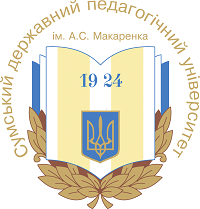DIGITAL TECHNOLOGIES IN OPTIMIZING THE RUNNING TECHNIQUE OF HIGHLY SKILLED SPRINTERS
DOI:
https://doi.org/10.32782/olimpspu/2025.2.8Keywords:
sprinting, digital technologies, mobile technologies, biomechanics, kinematics, inertial sensors, machine learning, injury prevention, functional monitoring, elite athletesAbstract
The article examines the current state of research on the use of digital technologies for optimizing the running technique of highly skilled sprinters. It highlights the importance of running technique in achieving competitive performance and its connection to the biomechanical, psychophysiological, and psychological aspects of athlete preparation. The aim of the study was to determine the effectiveness of using digital technologies to optimize the technique of elite-level sprinters. The methodology involved a systematic review of publications selected from the Web of Science database using an extended search query related to digital technologies, running technique, and sprinters, covering the period 2021–2025. Out of 92 identified works, 10 full-text sources were included in the final analysis. The analysis followed the PRISMA protocol with further visual cluster grouping performed using VOSviewer. The results were grouped into three interconnected clusters: (1) studies on the biomechanical characteristics of running technique using marker- based and markerless systems; (2) the use of digital technologies in the training process for technique analysis, fatigue detection, and individual feedback generation; and (3) research related to injury prevention and strength training. Digital technologies within these clusters serve interrelated functions in sprinter training. The first cluster ensures high-precision instrumental measurement of technical parameters. The second focuses on functional monitoring and technique adaptation under training loads. The third emphasizes injury prevention through risk detection based on digital data. Together, these areas form an integrated digital system that supports the training process, aiming to improve performance and athlete safety. The findings confirm that digital systems enable accurate measurement, expanded interpretation of motor parameters, and evidence-based interventions in training. The conclusion underscores the importance of digital technologies in sprinter preparation. They serve as tools for objective monitoring, technique correction, and injury reduction.Future research should focus on developing integrated monitoring systems for assessing athlete readiness.
References
Bakti A. P., Kusnanik N. W., Wahjuni E. S. et al. The correlation of leg length, jump height, and leg muscle explosive power toward sprint ability. Retos. 2024. Vol. 51. P. 1463–1468. DOI: https://doi.org/10.47197/retos.v51.101052
Cassirame J., Eustache E., Sanchez H. et al. Clustering technical approaches of elite and world-class pole vaulters based on 10 years of measurement during competitions. Journal of Sports Sciences. 2024. Vol. 42, № 11. P. 971–980. DOI: https://doi.org/10.1080/02640414.2024.2372940
Chowdhary K., Crockett Z., Chua J., Hoo J. S. Exploring the Relationship between Running-Related Technology Use and Running-Related Injuries: A Cross-Sectional Study of Recreational and Elite Long-Distance Runners. Healthcare (Basel, Switzerland). 2024. Vol. 12, № 6. P. 642. DOI: https://doi.org/10.3390/healthcare12060642
Cronin N. J., Walker J., Tucker C. B. et al. Feasibility of OpenPose markerless motion analysis in a real athletics competition. Frontiers in Sports and Active Living. 2024. Vol. 5. P. 1298003. DOI: https://doi.org/10.3389/fspor.2023.1298003
Evans M., Colyer S., Salo A., Cosker D. Automatic high fidelity foot contact location and timing for elite sprinting. Machine Vision and Applications. 2021. Vol. 32. P. 1–20. DOI: https://doi.org/10.1007/s00138-021-01236-z
García-Fresneda A., Panoutsakopoulos V., Padullés Riu J. M. et al. Inter-Limb Asymmetry in the Kinematic Parameters of the Long Jump Approach Run in Female Paralympic-Level Class T63/T64 Athletes. Prosthesis. 2024. Vol. 6, № 1. P. 146–156. DOI: https://doi.org/10.3390/prosthesis6010012
Gutierrez C. J., Walton S. P., Bezodis N. E. Development of a novel biofeedback system for the sprint start. International Journal of Sports Science & Coaching. 2023. Vol. 18, № 1. P. 114–122. DOI: https://doi.org/10.1177/17479541211072729
Hoitz F., Fraeulin L., von Tscharner V. et al. Isolating the unique and generic movement characteristics of highly trained runners. Sensors. 2021. Vol. 21, № 21. P. 7145. DOI: https://doi.org/10.3390/s21217145
Hut M., Minkler T. O., Glass C. R. et al. A randomized controlled study of mindful sport performance enhancement and psychological skills training with collegiate track and field athletes. Journal of Applied Sport Psychology. 2023. Vol. 35, № 2. P. 284–306. DOI: https://doi.org/10.1080/10413200.2021.1989521
Kathirgamanathan B., Nguyen T. T., Caulfield B. et al. Explaining fatigue in runners using time series analysis on wearable sensor data. Joint European Conference on Machine Learning and Knowledge Discovery in Databases. Cham: Springer Nature Switzerland, 2023. P. 87–103. DOI: https://doi.org/10.1007/978-3-031-74633-8_6
Li Y., Guo Q., Shao J. et al. Neuromuscular factors predicting lower limb explosive strength in male college sprinters. Frontiers in Physiology. 2025. Vol. 15. P. 1498811. DOI: https://doi.org/10.3389/fphys.2024.1498811
Moura L. D. P., Moura N. A., Moura T. F. D. P. et al. Jumping with control: the interplay between psychological constructs and run-up variability in elite jumpers. Frontiers in Psychology. 2024. Vol. 15. P. 1412910. DOI: https://doi.org/10.3389/fpsyg.2024.1412910
Montalvo S., Gonzales F., Lance G. et al. Comparative kinematic analysis of high-speed treadmill vs. overground sprinting across athletic levels and sex. The Journal of Sports Medicine and Physical Fitness. 2025. Vol. 65, № 2. P. 171–179. DOI: https://doi.org/10.23736/S0022-4707.24.16089-6
Provot T., Millot B., Hazotte E. et al. The Measurement of Spatiotemporal Parameters in Running at Different Velocities: A Comparison Between a GPS Unit and an Infrared Mat. Methods and Protocols. 2024. Vol. 7, № 6. P. 103. DOI: https://doi.org/10.3390/mps7060103
Vellucci C. L., Beaudette S. M. A need for speed: Objectively identifying full-body kinematic and neuromuscular features associated with faster sprint velocities. Frontiers in Sports and Active Living. 2023. Vol. 4. P. 1094163. DOI: https://doi.org/10.3389/fspor.2022.1094163
Wolski L., Pappas E., Hiller C. et al. Is there an association between high-speed running biomechanics and hamstring strain injury? A systematic review. Sports Biomechanics. 2024. Vol. 23, № 10. P. 1313–1339. DOI: https://doi.org/10.1080/14763141.2021.1960418
Yuce A., Oto O., Misir A. Systemic video analysis of hamstring injury mechanism for professional athletes: sprint- type injuries occurring during the swing phase of the running cycle. Medicina dello sport. 2022. Vol. 75, № 3. P. 446–456. DOI: https://doi.org/10.23736/S0025-7826.22.04121-7
Downloads
Published
Issue
Section
License

This work is licensed under a Creative Commons Attribution-NonCommercial 4.0 International License.







